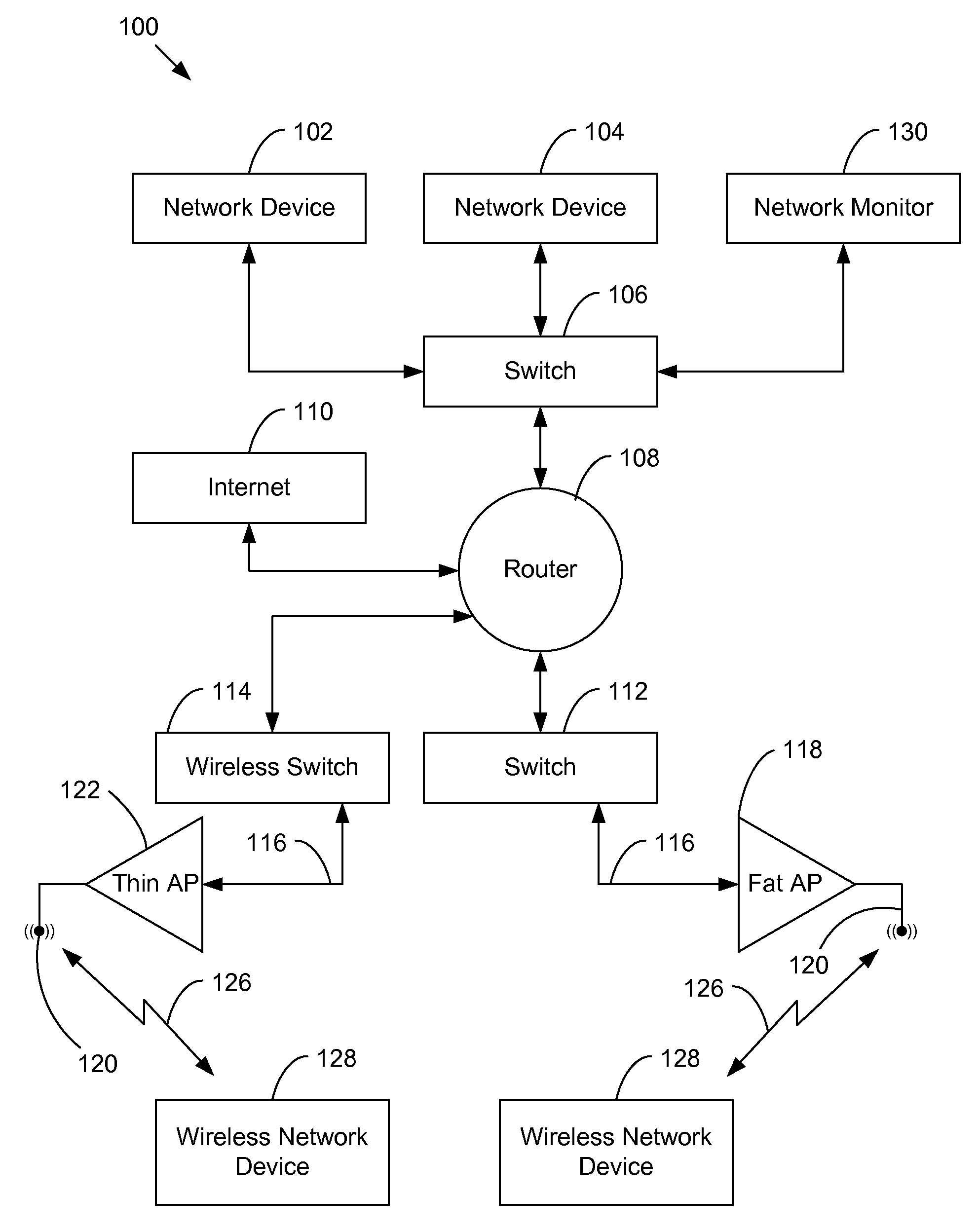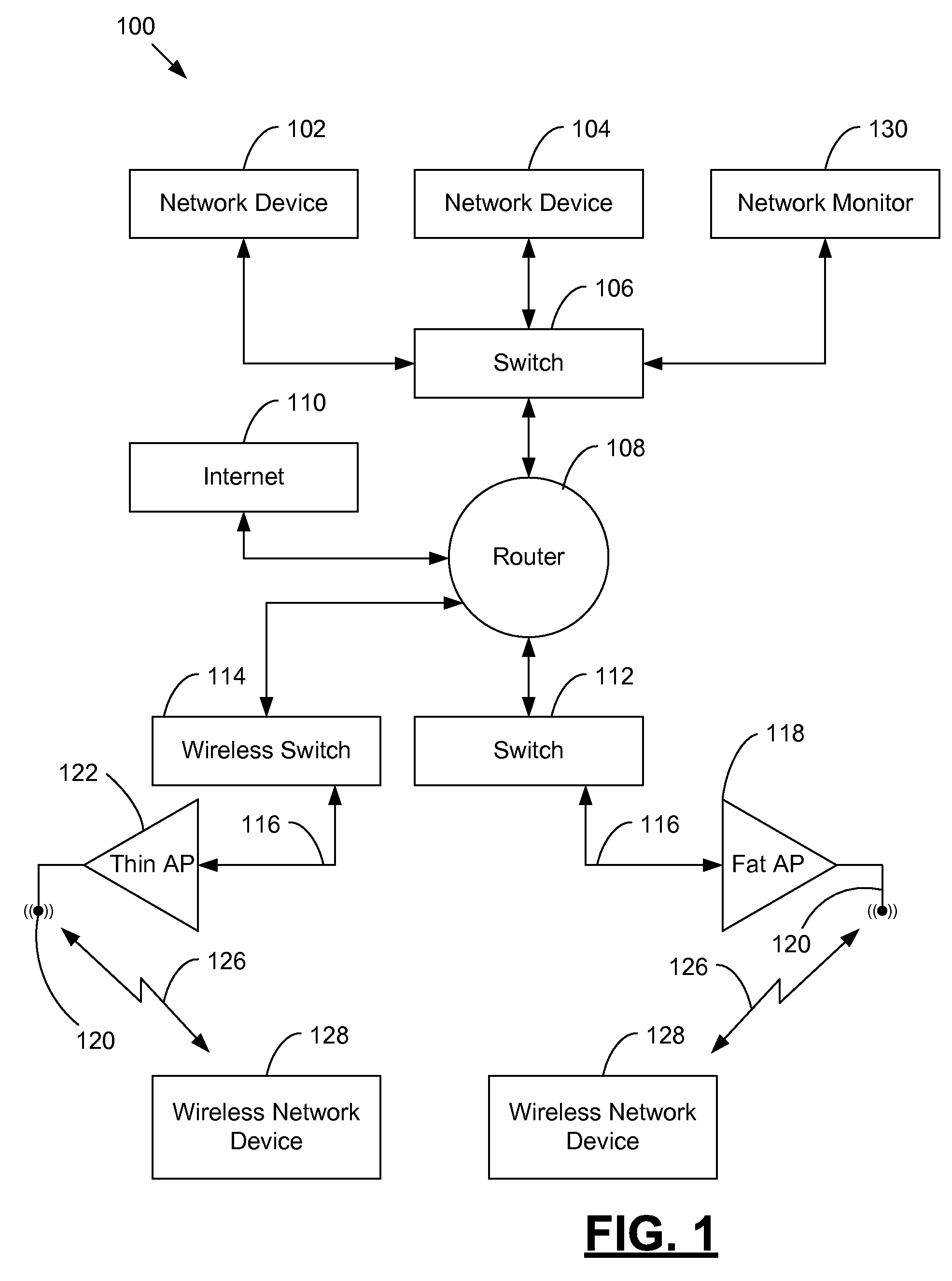Network performance monitor
a network performance monitor and monitor technology, applied in the field of mission critical data delivery on shared networks, can solve the problems of inability to improve the 25 minutes per day of dropout, and inability to use the spread spectrum system that uses this band. to achieve the effect of maintaining the security and privacy of the network
- Summary
- Abstract
- Description
- Claims
- Application Information
AI Technical Summary
Benefits of technology
Problems solved by technology
Method used
Image
Examples
Embodiment Construction
[0029]FIG. 1 shows a sample 802.3 and 802.11 network 100 wherein both a thin Access Point architecture and a Fat Access Point architecture are used. Network 100 includes a first network device 102, a second network device 104, and network monitor 130, which are each connected to one another by switch 106. Network monitor 130 may, for example, be installed on a server. Switch 106 is connected to router 108 which is connected to internet 110. Second switch 112 provides a 802.3 network connection 116 for one or more Fat Access Points 118, each with at least one antenna 120. The wireless switch 114 controls one or more Thin Access Points 122 over a network connection 116, each such Access Point having at least one antenna 120. Both Fat Access Points 118 and thin Access Point 122 can make a wireless network connection 126 to wireless network device 128. With a Fat Access Point architecture, (such as a Cisco AP 1240), all the intelligence for 802.11 communication including encryption, aut...
PUM
 Login to View More
Login to View More Abstract
Description
Claims
Application Information
 Login to View More
Login to View More - R&D
- Intellectual Property
- Life Sciences
- Materials
- Tech Scout
- Unparalleled Data Quality
- Higher Quality Content
- 60% Fewer Hallucinations
Browse by: Latest US Patents, China's latest patents, Technical Efficacy Thesaurus, Application Domain, Technology Topic, Popular Technical Reports.
© 2025 PatSnap. All rights reserved.Legal|Privacy policy|Modern Slavery Act Transparency Statement|Sitemap|About US| Contact US: help@patsnap.com



